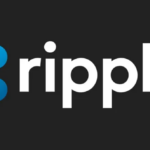Use Bitcoin for saving, use Dollars for spending: Is this the path to hyperbitcoinization?

Lava has introduced an innovative self-custodial Bitcoin borrowing platform that differs from conventional crypto loan services by not taking custody of users’ assets or engaging in risky practices. This platform utilizes native bitcoin smart contracts (DLCs) to enhance security during the borrowing process. The primary product offered by Lava is the Lava Vault, accessible on both mobile and desktop devices, functioning as a secure wallet and borrowing interface. To ensure the safety of user funds, Lava employs state-of-the-art security features like device-based secure chips for managing private keys and biometric/two-factor authentication. Additionally, Lava provides encrypted backups as an extra layer of security to protect against fund loss due to a single point of failure.
Lava’s Loans product allows users to obtain cash loans using their Bitcoin holdings as collateral without the need to sell their BTC. This feature is especially beneficial for Bitcoin HODLers who wish to retain their long-term BTC exposure while accessing cash for immediate financial requirements. By utilizing Discreet Log Contract (DLC) technology, Lava is able to offer these loans while maintaining a self-custody model, thereby minimizing counterparty and rehypothecation risks.
In a recent move, Lava has introduced its stablecoin offering, LavaUSD, aimed at merging the world of Bitcoin with dollar-based transactions. LavaUSD can be redeemed 1:1 for the US dollar, backed by reserves invested in cash and highly liquid assets. These reserves include a combination of short-dated US Treasuries and overnight instruments, ensuring the stability and liquidity of LavaUSD.
This novel approach of saving in Bitcoin and spending in dollars raises questions about the future of Bitcoin adoption and the concept of hyperbitcoinization. While traditional financial systems continue to dominate global transactions, platforms like Lava are pioneering the integration of Bitcoin into everyday financial activities. The ability to borrow against Bitcoin holdings while retaining ownership of the asset opens up new avenues for financial flexibility and adoption of cryptocurrencies in mainstream financial services.
The juxtaposition of saving in Bitcoin and spending in dollars exemplifies a transitional phase towards greater acceptance and utilization of Bitcoin in the mainstream economy. As platforms like Lava continue to innovate and provide alternative financial solutions, the debate around spending Bitcoin as a form of currency will likely intensify, reflecting the evolving landscape of digital assets and their role in shaping the future of finance.




